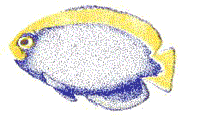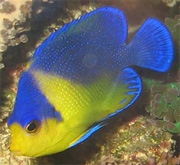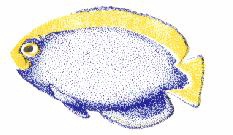|
Before you set up that tank
By Jim Stime, Jr
Aquarium Design
Ok, so you have decided that you want a saltwater aquarium in your home
or office. How familiar are you with THE BIG PICTURE ? Aside from the tank,
stand, filter, and water chemistry aspects, how does the marine aquarium
hobby fit into the world scheme ? These may seem like an odd questions
but they are ones that have tremendous global implications.
Most inquiring or beginning marine hobbyists feel they need to have
a degree in marine biology to be successful. This is not really the case
as there is not that much difference between a freshwater and a saltwater
aquarium, but being a marine hobbyist you do need to have an understanding.
It is this lack of understanding that causes the majority of aquarium
hobbyists to 'sputter along' with the bits-and-pieces of information that
they gather from their local pet shop. When I worked in the shops I had
a tendency to, unintentionally, overwhelm many of my customers with too
much information. Quite often I would see their eyes roll back in their
heads, or they would hold up crosses and strings of garlic ( I'm
just joking ). Many times I would tell them that there was a test they
had to take before they left the store ( this would really get their attention
). If I suggested a good aquarium book the first thing they would look
at was not the table of contents but the price tag on the book.
It is frustrating to try to provide good information to hobbyists, and
yet ironically I have received many e-mails and telephone calls from individuals
who comment about the lack of, or poor quality of information that they
do receive.
Well, if you have made it to this page and web site then you are one
of those individuals who is looking for more or better information....and
that is what this web site is all about ! This site is designed for the
beginner, as well as, the advanced marine hobbyist. As you go through these
web pages you will notice that on the left-hand side I have listed a number
of books. Those books listed are what I feel are the appropriate ones for
the topic. They are not listed there so I can make money ( Amazon usually
only offers 5% anyhow ), they are there to offer additional content to
the subject, and to help educate you with the marine hobby.....and that
is the point of this article, if you are going to be in this hobby you
need to understand this hobby.
Besides understanding your marine aquarium you need to also understand
how it relates to the source of its livestock. Livestock ? Well, where
do you think those fish and corals are coming from ? They are 'wild-caught',
mostly from coral reefs. As I walk down the rows of tanks at the local
wholesalers 95% + of the fishes, corals and invertebrates that are available
were collected from the wild.
According to CNN.com "coral structures contain an estimated 25 percent
the planet's marine life", and that "recent strong cycles of storms and
weather changes linked to the El Nino and La Nina phenomena are also believed
to have harmed coral reefs in many parts of the world". Just the other
day a friend of mine who lives in Hawaii told me that the reef in front
of his home had bleached ( bleaching is when a coral expels its color pigments
and internal algae's due to some form of stress ).
The point I am trying to make is two fold; as a hobbyist you need to
be aware of what affects the environment that your livestock comes from,
and what are you going to do if the collection of that livestock becomes
limited ?
Today many advanced hobbyists are beginning to propagate / grow a wide
variety of corals in their own aquariums, and a number of hobbyists are
becoming successful at raising some marine fish in their own aquariums.
This has lead to the beginnings of a new industry in Mariculture ( the
marine version of aquaculture ), and yet there are less than a dozen commercial
businesses and a scattering of hobbyists currently involved in it.
So why is mariculture becoming a topic of interest these days ? Is this
the next step in marine aquarium keeping ? Is it due to articles such as
" Raiders of the Reefs " in Audubon Magazine, or " Corals in Peril " in
National Geographic, or " Reef Alert " in Aquarium Fish Magazine ?
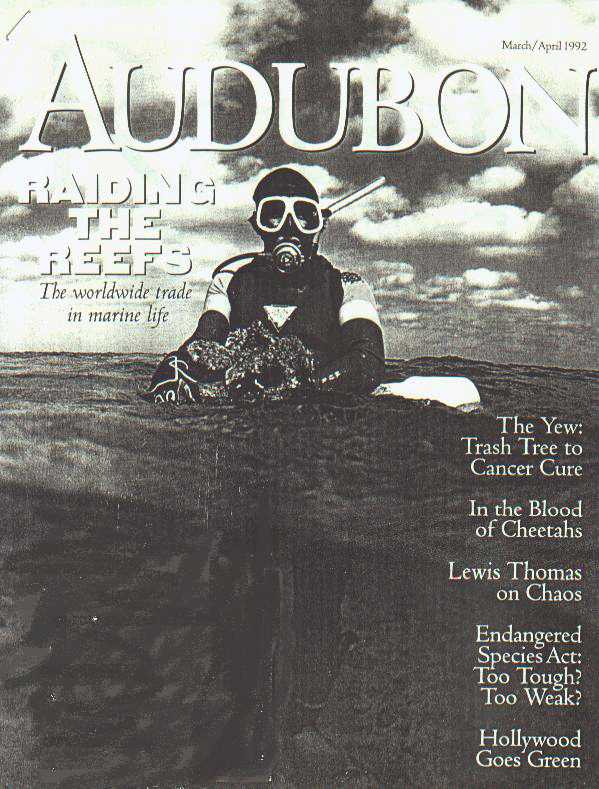 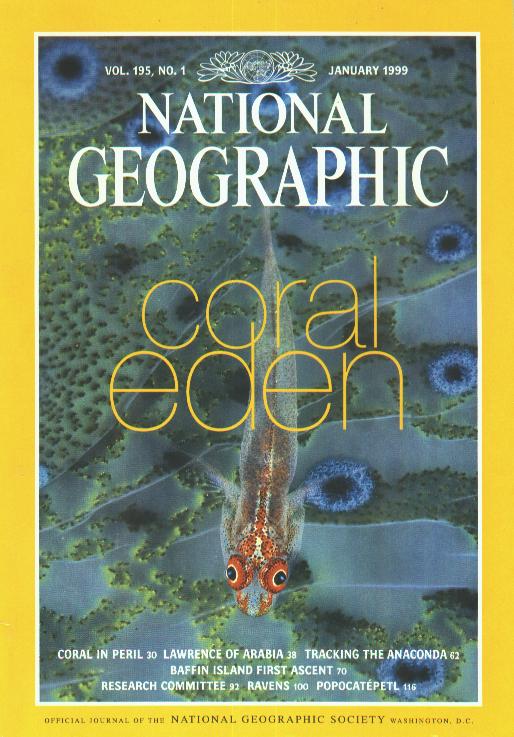 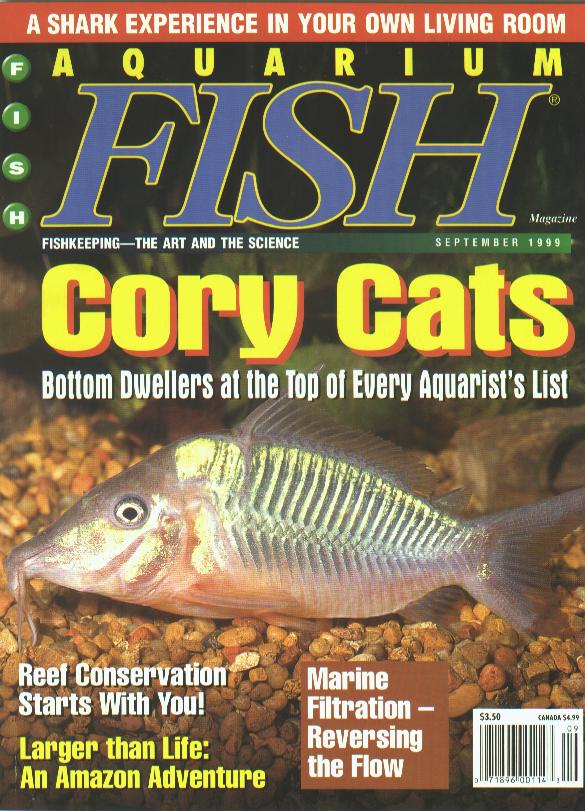
Or is it the results of the June 11, 1998 CORAL REEF PROTECTION Executive
Order signed by President Clinton.

Its most likely a combination of all of these. The sad true is that
reports indicate that in 1998 sixty countries recorded coral bleaching
events due to global warming, over fishing and an assortment various pollution
factors. CNN.com recently reported " Coral exists throughout the world's
tropical oceans. Covering only 1 percent of the Earth's surface, coral
structures contain an estimated 25 percent the planet's marine life --
earning the nickname "rainforests of the sea"."Many scientists regard the
sharp decline in reef health as alarming. United Nations-sponsored research
estimates that 20 percent of the world's coral structures have died or
become badly damaged in the past 20 years and that most of the world's
coral could be similarly threatened in the next 50 years".
The results of these environmental and commercial conditions on coral
reefs have caused numerous Environmental Agencies to take notice and to
begin to question why and what can be done to minimize these effects. Charles
Delbeek of the Waikiki Aquarium recently attended a meeting of the Coral
Reef Task Force, part of President Clintons Executive Order, and wrote
that one of the groups involved, the International Working Group, " identified
several key issues", and at " The top of their list was the international
trade in coral and coral reef specimens"
So where does this leave the marine aquarium hobby ? With potential
restrictions on collection and importing of marine fish and invertebrates,
mariculture ( or tank raised specimens ) are a subject that needs to be
explored if wild caught aquarium habitants are going to decrease and the
marine aquarium hobby is to survive.
Currently there are approximately less than 60 species of marine aquarium
fishes being tank bred, most of which are the Clownfish species,
and less than 200 marine aquarium corals and invertebrates, most of which
are the Acropora and Soft Coral species, are being tank raised.
In a recent simple survey I conducted, I questioned a number of hobbyists
as to " How many species of Tank Raised Fish " they thought were
available ?
Fifty Eight ( 58 % ) percent had no idea.
Those that did answer the question came up with an average of Forty
( 40 ).
Of those 40, Clownfish, Bangaii Cardinalfish, and a few species of
Psuedochromis were the ones most often reported.
Of those same individuals I asked " Does your Retail Store carry Tank
Raised Fish ? ",
Twenty Nine ( 29% ) percent had no idea.
Twenty Six ( 26% ) percent said no.
Forty Five ( 45% ) percent said yes
( Clownfish being the most commonly available retail Tank Raised Fish
)
When asked if, other than Retail Shops, " Where can you get Tank Raised
Fish ? "
Thirty Eight ( 38% ) percent had any idea where Tank Raised livestock
was available beyond their retail store.
The Aquarium Hobby is the third largest segment of Pet Industry in the
United States. So why is there so much mis-information, mystique, and lack
of understanding ? Granted there are books, video tapes, magazines and
web sites. The sad truth is most of this information is never used by the
hobbyists, why ? I suspect it’s partly due to the additional cost, and
partly due to the thought that operating an aquarium should be as simple
as owning a dog or a cat. Ironically the number of books on dog and cat
care is even less in the homes of pet owners. Think about it, how many
of you own a cat or a dog ? How many of you actually have information at
home on their care and keeping ?
Ask the majority of the aquarium hobbyist as to how their fish are collected
and they will most likely answer " a native boy uses either a net or some
chemical ", " and then they are shipped to a local wholesaler who sells
them to the fish store". Most hobbyists have absolutely no idea as to what
their livestock goes through before it ends up in their tanks. Only recently
has some of this information begun to come to light, and that information
is either purposely or unintentionally skipped over.

Take for example, what does the " native boy " do with the fish he collects
each day ? Does he make a run into the local village to deliver his product
to the local distributor ? If not what does he do with his catch at the
end of the day ? How often does he take a batch of fish to this distributor
?
Lets talk about how the fish are shipped. How are they packaged ? What
is the source of the water they are shipped out in ? How many fish to a
bag ? Due to freight costs how much water to a bag ? Once in the bag how
long before they are sent to the airport ? How long does it take to get
to the airport ? How long do they sit at the airport before they are loaded
onto the plane ? How long is the flight ? An interesting note, freight
charges account for approximately 50% of the wholesale cost of your marine
specimens.
By the way, the average pH of the bag water once a fish arrives to the
wholesaler is 6.5 ( the normal pH of a saltwater aquarium is 8.1 ). Actually
this is beneficial to the fish in the bag during shipping as 'chemically'
the water is less toxic. The problem occurs when these fish are not acclimated
properly to the pH of the water in the wholesaler / retail store / hobbyists
tanks.
One of the greatest frustrations to the importer of fish and corals
are the airlines. Livestock seems to not be their priority. Even if a box
is marked LIVE ANIMALS it just does not gain the same importance as other
cargo. Many times a shipments scheduled departure is delayed and the boxes
of livestock are left sitting in some airport staging area.
Recently I had the opportunity to visit a wholesaler who had just received
about 300 Flame Angels and Lemonpeel Angels. I was shocked to see about
50% of these fish, who had just been introduced into the holding system,
lying on the bottom of the tanks gasping. What ever the reason, I am very
sure that this situation definitely contributed to some form of stress
to the animal.
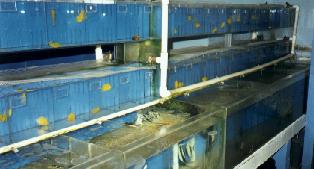 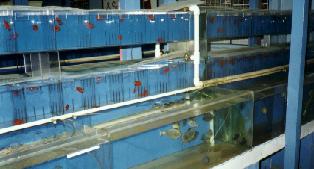
In speaking with this wholesaler he informed that it's quite common
for these fishes to be collected and held in small containers, grouped
together by a net, in a lagoon, for up to a week before they are brought
to the local collection facility on that island.
A friend of mine recently witnessed a situation at another wholesaler.
An individual was pulling yellow seahorses out of a cubical and tossing
them into a dry Styrofoam container and then placing then into another
cubical system….all without acclimating them to the new water.
Let me go a step further, too often the retail store's version of acclimation
consists of floating the bag in a tank then dumping its contents directly
into the tank, and only after aggression has occurred is that animal moved
to another location.
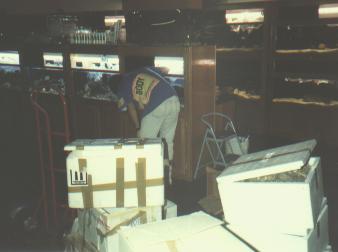 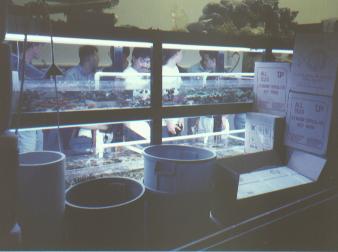
It just seems to me that too often the hobbyist is blamed for the lack
of quality introduction or health care, but in fact the problem leading
to poor quality fish may occur prior to the hobbyist even receiving the
fish.
I should add that acclimation is probably one of the areas of the least
understanding on the hobbyists part too. No matter how high a quality your
livestock is, if it's not handled correctly or introduced properly
into the aquarium the chances that it will do as well as it was intended
to will decrease.
Jacques Cousteau once said “ The most recent explorations of outer space
have demonstrated that our planet Earth, our Water Planet, is the only
planet in our solar system to be endowed with appreciable quantities of
liquid water. Life, born in the water, must be at least as rare as water
in the universe, and as such must be revered, under any of its forms, as
a miracle.”
This is my point, we as marine hobbyists need to be as familiar and
as responsible as possible, because if we as hobbyists can not take care
of what we have then someday these little jewels of the sea, these 'miracles
of life' may not be available to us.
Now, if you are ready to accept the required responsibilities of being
a marine hobbyist then you are ready to take that first step forward;
Beginning
a Saltwater Fish Aquarium
Beginning
a Coral Reef Aquarium
Considering
a Jellyfish Tank ?
|






